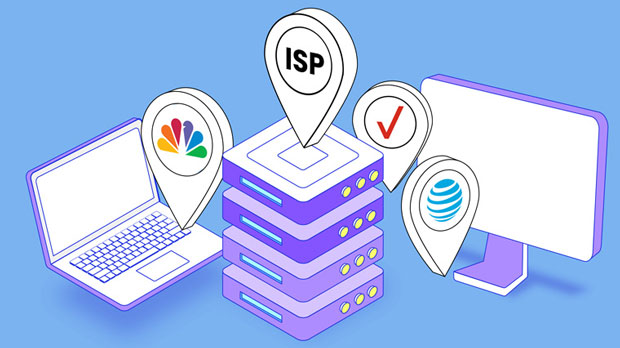How to get Socks5 proxy resources from social media?
Obtaining socks5 proxy resources from social media is a practical method for many users who require anonymity and privacy when browsing the internet. socks5 proxies are highly sought after due to their ability to handle a variety of protocols, providing users with faster and more reliable access to content. Social media platforms, which host millions of active users, have become a hub for the exchange of digital tools, including proxies. In this article, we will explore various ways to leverage social media platforms to find Socks5 proxies, highlighting the opportunities and challenges this method presents. Understanding Socks5 ProxiesBefore diving into how to obtain Socks5 proxies from social media, it's important to understand what Socks5 proxies are and why they are valuable. A Socks5 proxy is a type of internet protocol that routes internet traffic through an intermediary server, masking the user's original IP address. This provides anonymity and allows users to bypass geographical restrictions. Unlike other proxy types, Socks5 proxies can handle a wide range of internet protocols, including HTTP, FTP, and even email protocols. The versatility of Socks5 makes it particularly useful for users seeking privacy, security, or access to region-locked content.Why Social Media is a Source for Socks5 ProxiesSocial media platforms, such as Twitter, Reddit, Facebook, and specialized forums, have become important places where users exchange valuable digital resources. This includes proxy services, including Socks5 proxies. The reason social media serves as an ideal source for these proxies is its global user base and the open nature of many communities. In addition, users can easily find discussions, guides, or even direct listings of Socks5 proxies. However, this also comes with challenges, such as distinguishing between legitimate resources and scams.Key Social Media Platforms for Finding Socks5 Proxies1. TwitterTwitter has become one of the most popular platforms for sharing real-time information, and this includes Socks5 proxies. Many users, particularly in tech-savvy communities, share proxy resources through tweets, hashtags, and private messages. By following the right influencers, hashtags, and accounts dedicated to internet privacy, you can gain access to proxies that are frequently updated.To find Socks5 proxies on Twitter, you should search for hashtags like Socks5, ProxyList, or FreeProxies. However, it’s essential to verify the authenticity of the resource, as Twitter is also a platform where malicious users may share fake or harmful proxies.2. RedditReddit is an ideal platform for discovering Socks5 proxies due to its extensive network of subreddits dedicated to internet privacy and cybersecurity. Subreddits like r/Privacy, r/Proxies, and r/Technology often feature users posting free proxies or discussing proxy providers. These communities are typically moderated to some degree, which helps weed out spam and low-quality resources.One of the benefits of using Reddit to find Socks5 proxies is the ability to check user reviews and feedback on the proxies shared. The community-driven nature of Reddit allows you to verify whether the proxy is functional and trustworthy.3. Facebook GroupsWhile Facebook is generally seen as a platform for socializing, there are numerous private groups and communities dedicated to cybersecurity, privacy, and internet tools. These groups often provide valuable resources, including Socks5 proxies. Unlike Twitter or Reddit, Facebook groups are typically more closed and controlled, which may offer a safer environment for discovering proxies.To find Socks5 proxies, you can search for Facebook groups related to internet security, VPNs, proxies, and online privacy. Be sure to carefully review any posts or shared resources, and avoid groups with a history of sharing harmful or spammy content.4. Specialized Forums and CommunitiesSpecialized forums and online communities focused on cybersecurity, hacking, and privacy tools can also be great sources for Socks5 proxies. These forums are often populated by knowledgeable users who understand the nuances of proxy servers and can provide valuable insights. Forums such as those on Bitcointalk, Hack Forums, or niche cybersecurity websites may include sections dedicated to proxy sharing.The advantage of using these forums is that they tend to have more focused discussions, and users can directly interact with one another to exchange information or resources. However, it’s important to exercise caution, as some forums may have security risks or less reputable users.How to Verify the Quality and Safety of Socks5 Proxies Found on Social MediaWhile social media platforms offer an abundance of Socks5 proxies, not all of them are reliable or safe. To ensure that you’re using high-quality proxies, consider the following tips:1. Test the ProxyOnce you find a Socks5 proxy on social media, the first step is to test it. Use tools to check the proxy’s speed, anonymity level, and geographic location. Many online proxy checkers allow you to test the proxy for free. If the proxy is slow or unreliable, it’s best to look for alternatives.2. Check User ReviewsOn platforms like Reddit or Twitter, users often share their experiences with specific Socks5 proxies. Reading these reviews can help you avoid proxies that may not work as promised or are harmful to your security. Always prioritize proxies that have positive feedback from reputable users.3. Avoid Suspicious ProxiesBe cautious when encountering proxies that seem “too good to be true” or are shared by anonymous accounts. Often, these proxies may be harmful, either leaking your data or redirecting your traffic to malicious sites. It’s crucial to evaluate the source of the proxy and consider its reputation within the community.4. Consider the Proxy's OriginThe country of origin of a Socks5 proxy can give you an indication of its quality. Proxies from countries with a high level of internet censorship or regulation may not be reliable for privacy purposes. Furthermore, proxies originating from untrustworthy sources are more likely to be compromised. Always try to find proxies from well-established and reputable regions.Risks of Using Socks5 Proxies from Social MediaWhile social media can be a rich resource for obtaining Socks5 proxies, it also comes with several risks. These include:1. Security ConcernsProxies shared on social media may not always be secure. There’s a risk that malicious actors may share proxies that log your browsing data or expose you to cyber threats. Always ensure that the proxy you're using is safe by testing it and using it in a controlled manner.2. Lack of ConsistencyThe quality of proxies on social media can vary greatly, and many proxies shared for free may be short-lived or unreliable. It’s essential to check the validity and functionality of the proxy frequently, as social media users often post outdated resources.3. Legal and Ethical RisksDepending on your location, using certain proxies may violate local laws or regulations. Additionally, if the proxy is used for illegal activities, it could put you at risk of legal consequences. Always ensure that the use of Socks5 proxies complies with local laws and ethical standards.ConclusionObtaining Socks5 proxies from social media can be a useful strategy for those who need quick access to proxies for privacy or bypassing content restrictions. Platforms like Twitter, Reddit, and specialized forums can be rich sources of information and resources. However, users must exercise caution when selecting and using proxies to avoid security risks and legal complications. By following best practices for verification and remaining vigilant against scams, users can make the most of social media as a tool for acquiring Socks5 proxies while maintaining their online security and privacy.
2025-01-10

























































